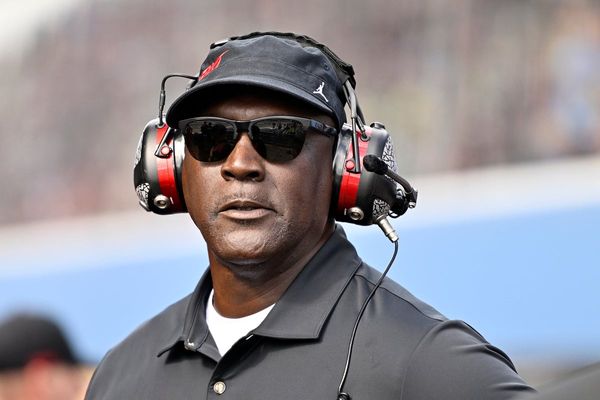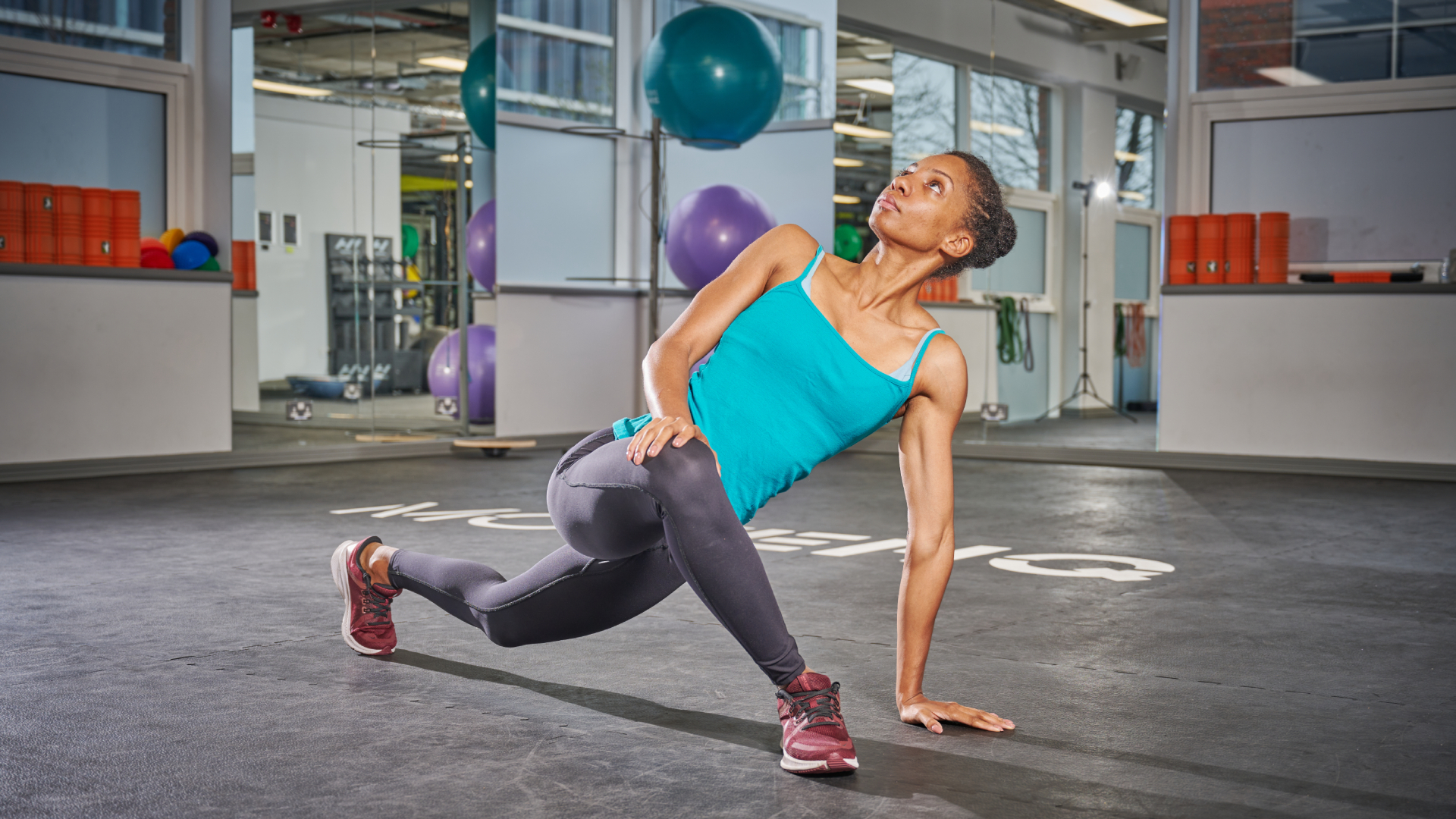
When a decade ago I first started encouraging cyclists to try yoga, most of them raised an eyebrow or humoured me politely. For most riders, the word ‘yoga’ conjured up images of awkward smalltalk in fusty village halls, pretzel poses reserved for the super-bendy, mostly female practitioners, and maybe a bit of obscure chanting. Fast-forward to 2023 and most professional riders factor in a structured stretching session at least a few times a week – and many regularly practise yoga. So what’s changed and is yoga something that's worth it for amateur riders?
Should cyclists do yoga?
Strip away the breathing and meditation elements from a typical yoga session and you have a series of physical postures that systematically work the body through various planes of motion, such as lateral flexion, rotation, and extension (side bending, twists and back bending in yoga speak). This is perfect for breaking cyclists out of their fixed riding position, relieving stiffness and potential muscle imbalances that can stem from the hours in the same posture on the bike. Observe a cyclist climb off their bike and you’ll notice they do yoga-like movements instinctively, such as arching their backs with their hands behind their heads.
The back is a common site of niggles or pain for cyclists, and it especially benefits from this multi-directional mobility work – ‘movement is medicine’, as the saying goes. The other obvious cycling tight spots effectively targeted by yoga are the hamstrings, the hardworking quadriceps, the hips, hip flexors, and the glutes or buttocks. For some cyclists, there are meaningful performance gains to be had too. Yoga can make possible a more aero, flatter-backed riding position – essential for TT riders – while the breathing techniques can facilitate slower, deeper on-bike breathing.
So, what are your options as a novice yogi? Ideally, find a teacher accustomed to working with cyclists or other endurance athletes. The most economical approach is to request a tailored session that you can undertake in your own time – that way, you only need to pay for a few lessons to get you started. Though there are instructional yoga videos for cyclists online – such as ‘Yoga with Adriene’ – it’s better to find a local yoga class where a teacher can ensure you’re getting the basics right.
There are dozens of yoga styles, from the fast-paced and strenuous Ashtanga to ‘Yin’ where you hold deep stretches for up to five minutes. If you’re not already doing strength training, the flowing styles of Ashtanga and Vinyasa yoga can provide some strengthening benefits, the repeated planks and dogs bolstering your core and shoulders. Just be cautious if you suffer from tension in the neck and shoulders, as you don’t want to exacerbate this.
Be warned, some yoga classes include lots of standing balancing poses and this can make for tired legs. A happy medium is a yoga style called Hatha, which usually includes dynamic warm-up movements and then some static stretches.
If you ride frequently, do both forms of stretching. Dynamic is great for warming up muscles but it’s essential to hold a stretch to maintain or improve flexibility. Exactly how long to hold each stretch is still debated in the sports science world. A panel of experts assembled by the American College of Sports Medicine recommends holding for a maximum of 60 seconds. Others say 20 seconds is sufficient. Research has also shown that static stretching temporarily reduces muscle power, so schedule yoga for after your ride, in the evening or on a rest day.
The principal purpose of yoga for cyclists is not touching your toes but safeguarding your riding comfort for the future. Monica Dew, a Level 3 cycling coach with the Doncaster-based cycling academy Clancy Briggs, starts her young riders early. “Yoga is a fantastic way to ensure your body withstands the demands of cycling year after year,” says Dew. “Staying supple and aiding your recovery is vital. It’s all about creating healthy habits.”
Yoga for cyclists: 30 minute session to try
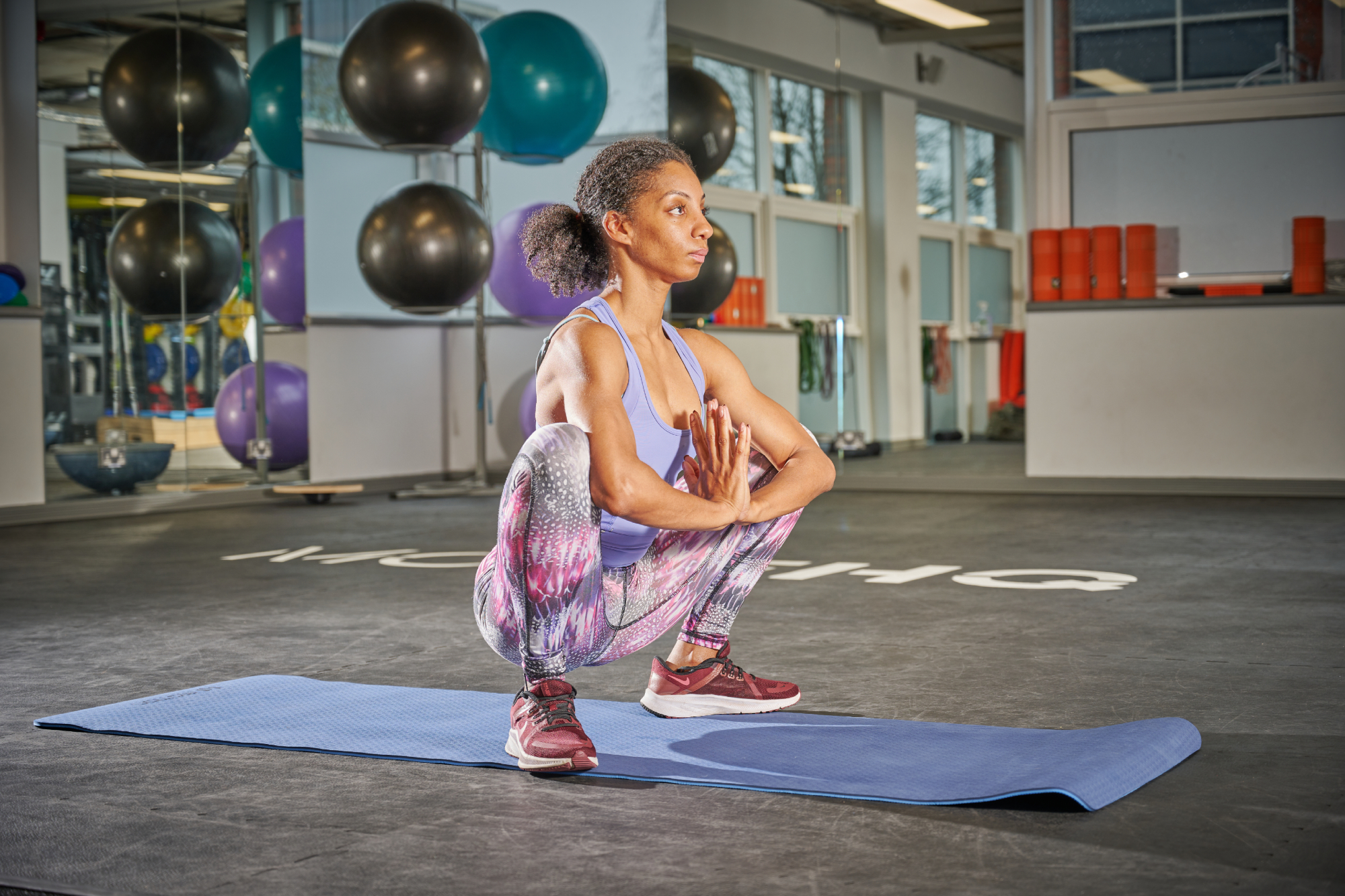
Here is a yoga session designed specifically for cyclists. It includes both stretching and strengthening elements, but if your upper back and shoulders feel tight from riding, omit the plank. Ideally, do this session two to three times a week either after riding or on a rest day.
1. Standing backbend
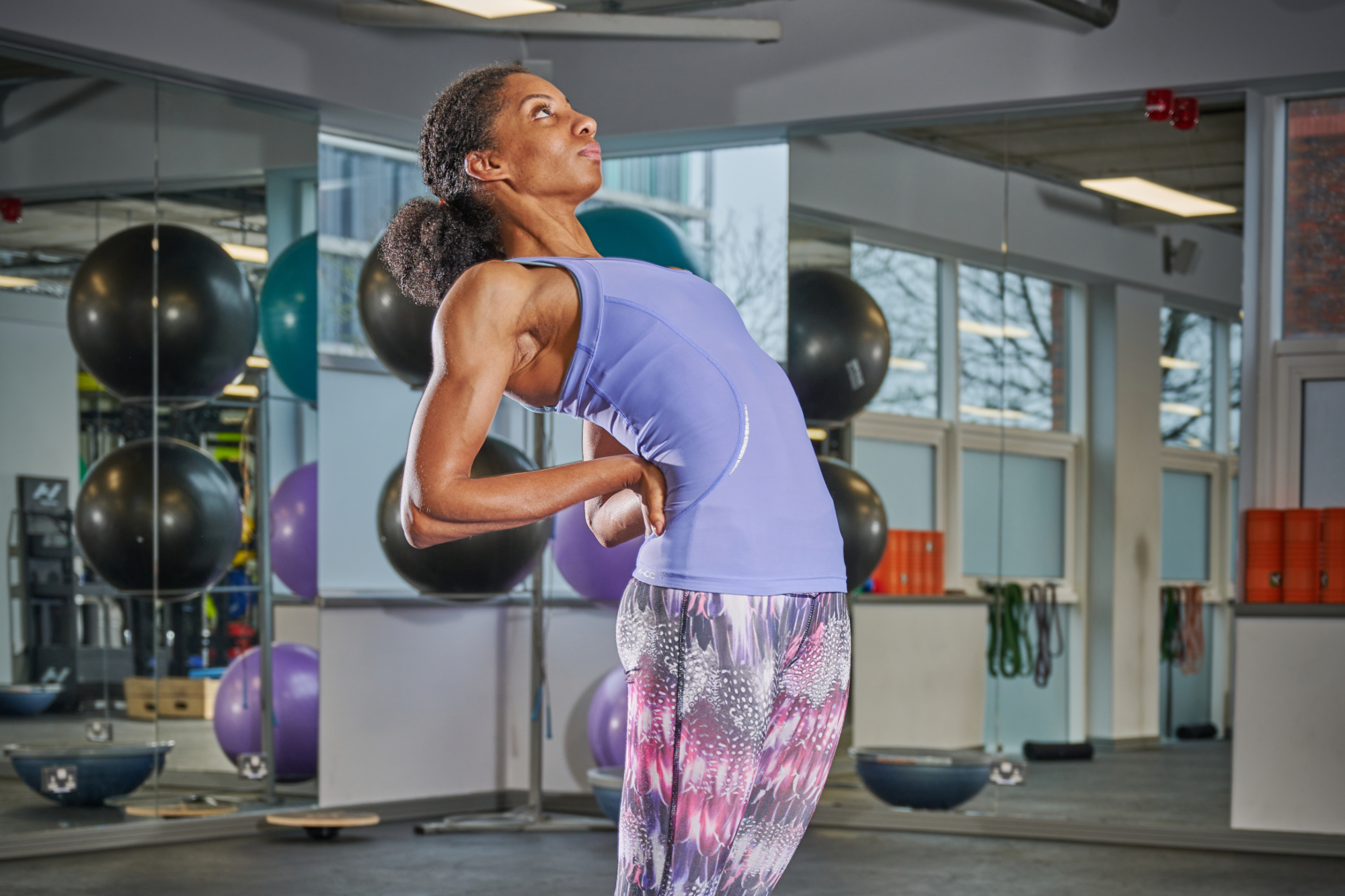
Here’s a pitstop stretch that can be done at the side of the road to ease the spine into extension and relieve an aching back. Extension, or back bending, feels great after hours in the saddle with a flexed spine and helps keep the back comfortable and mobile.
- Stand with your feet hip-width apart.
- Tuck your backside in.
- Place your palms on your lower back and lean slowly back.
- Hold for a few seconds and then return to standing upright.
2. Standing forward fold
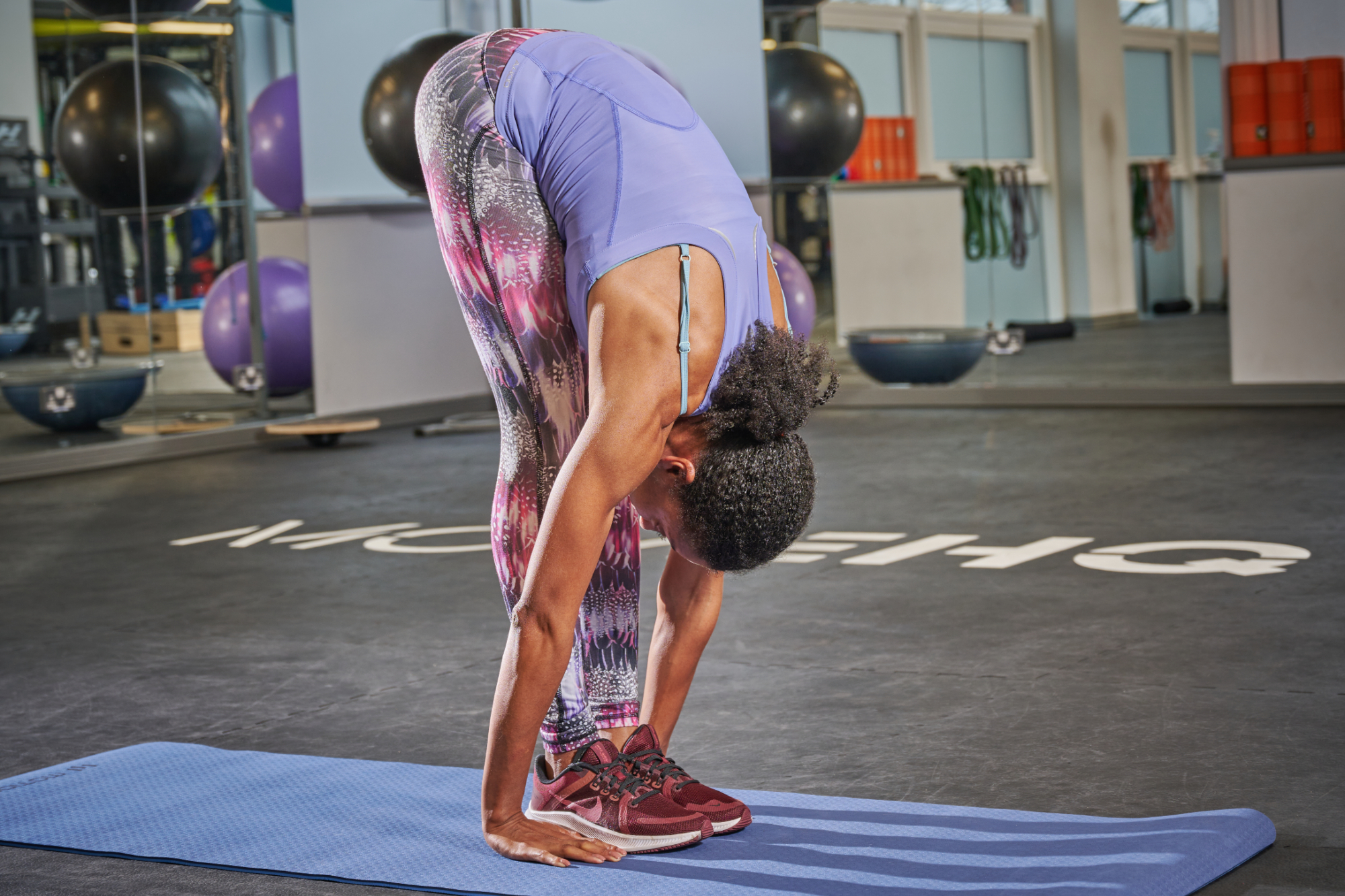
An easy and accessible way to stretch the hamstrings, this pose also flexes the whole of the back of the body, including the upper back and neck. The model has her hands flat on the floor but you can also just let the arms dangle down or fold them to add more weight to the upper body element of stretch.
- Stand with your feet hip-width apart.
- Bend your knees a little.
- Slowly bend your upper body forwards and relax your head.
- Touch the floor, fold the arms or let them dangle.
- Take a few deep breaths.
- Bend your knees and rise up to standing with a straight back.
3. High plank
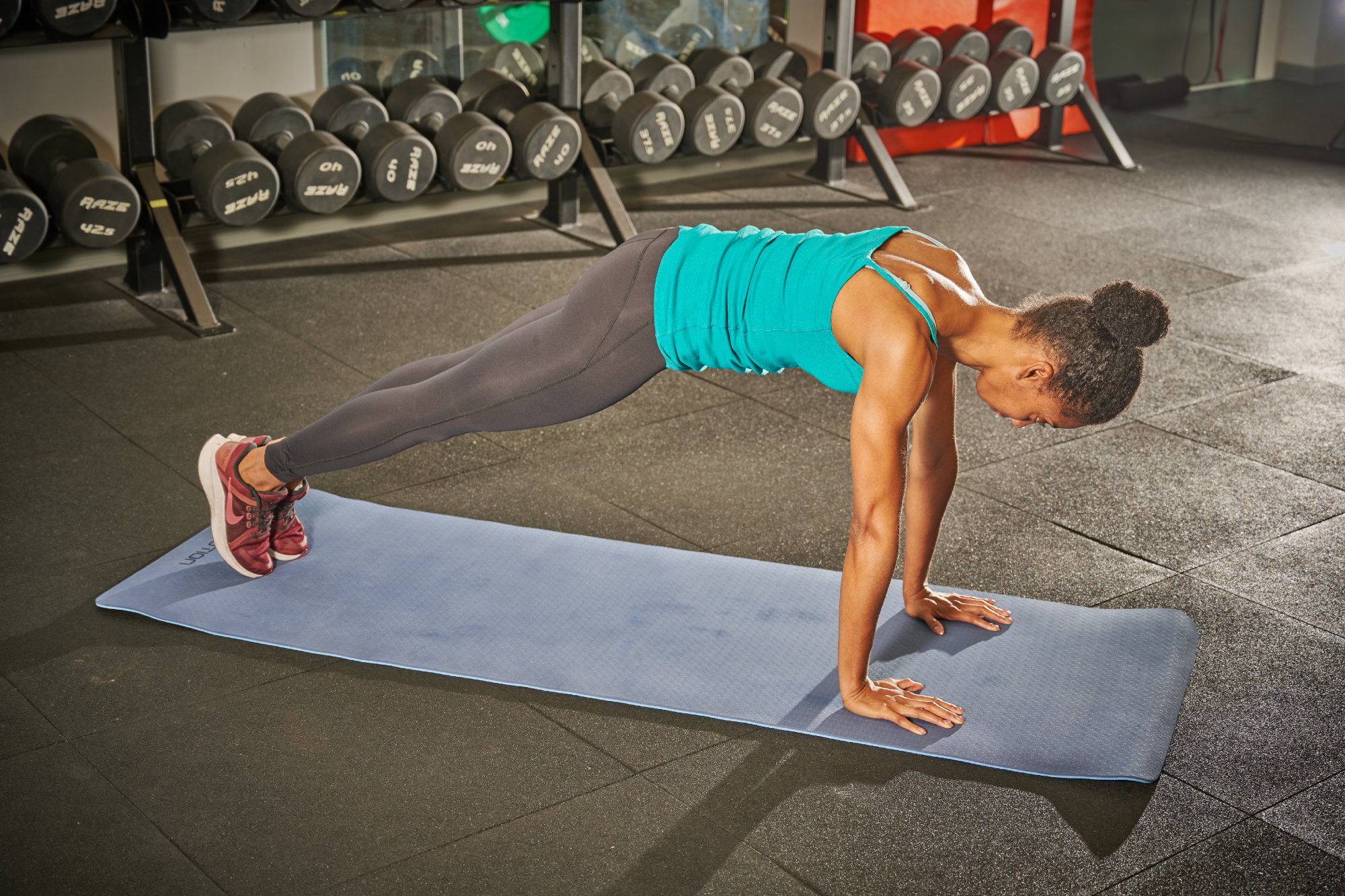
The plank is a great all-round core strength exercise for cyclists, targeting abdominals, arms and shoulders. Postures like the plank also help with bone health and prevent osteoporosis, something that cyclists are at increased risk of due to the lack of weight bearing involved in riding.
- Start on all fours with your hands directly under your shoulders.
- Lift your knees on the floor.
- Line up the back of your head with your hips and heels.
- Hold for 30 seconds or longer.
4. Runner’s lunge
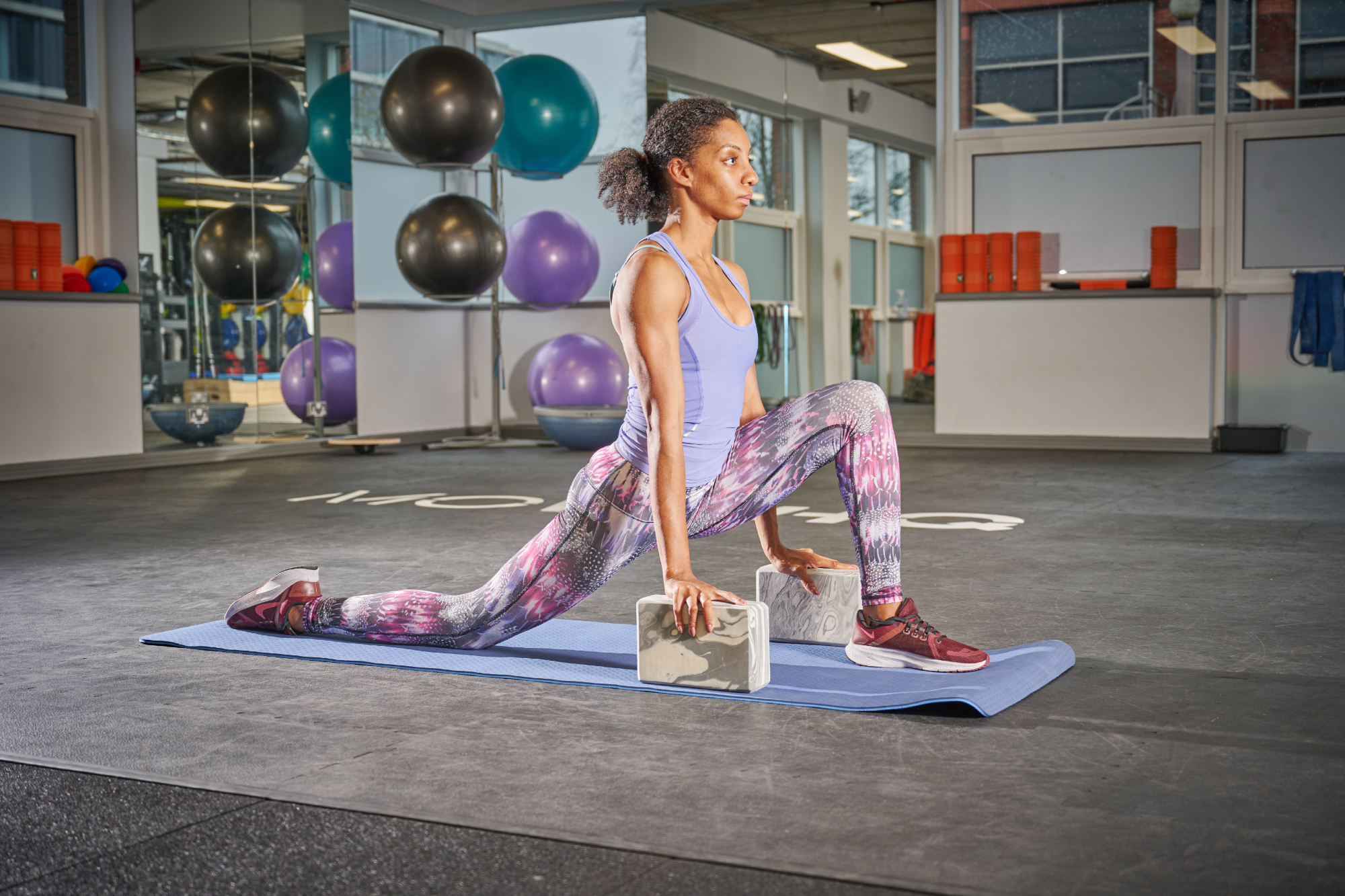
A simple runner’s lunge, performed correctly, will stretch the hip flexors, which help lift your leg on every pedal stroke. The trick to isolating these muscles is to first tuck the backside in before you slide forwards into the lunge, maintaining this pelvis position.
- Start on all fours.
- Step your right foot up in between your hands.
- Lift your upper body and place your hands on two yoga foam bricks, on your hips or behind your head.
- Tuck your backside in.
- Slide forwards into the lunge.
- Hold for 30 seconds or longer.
5. Pigeon pose
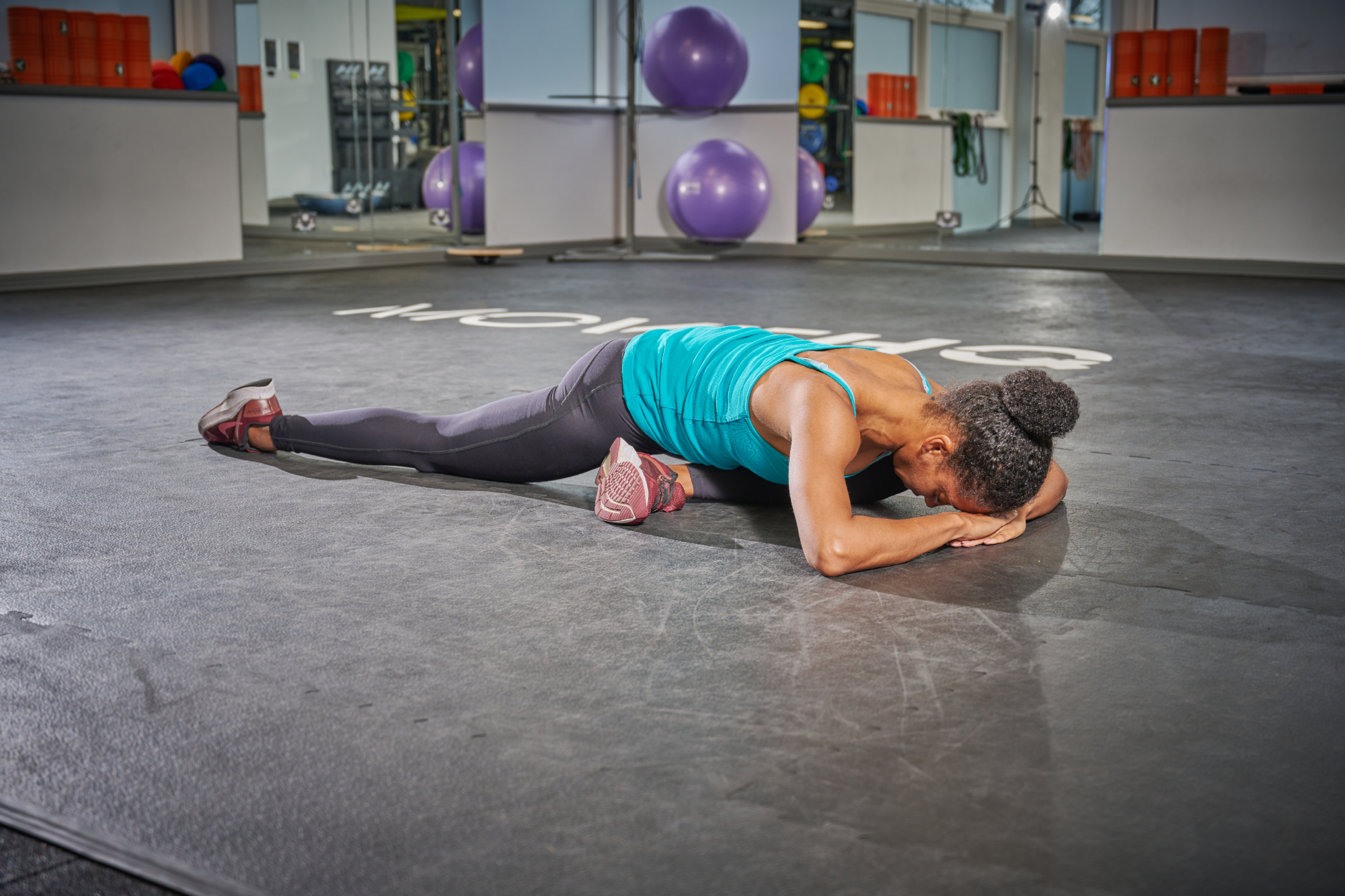
Most cyclists get tight buttock muscles, or gluteus maximus, and sometimes soreness in a muscle called piriformis located right in the middle of the butt cheek (the one massage therapists lean their elbow into!). Pigeon pose is a great way to release both muscles.
- Start on all fours.
- Slide your right knee up behind your right wrist.
- Shuffle your right foot a little over to the left.
- Extend your left leg away until it straightens.
- Lower onto your forearms, stack one hand on top of the other and rest your forehead on your hands or straighten your arms above your head.
6. Extended child’s pose
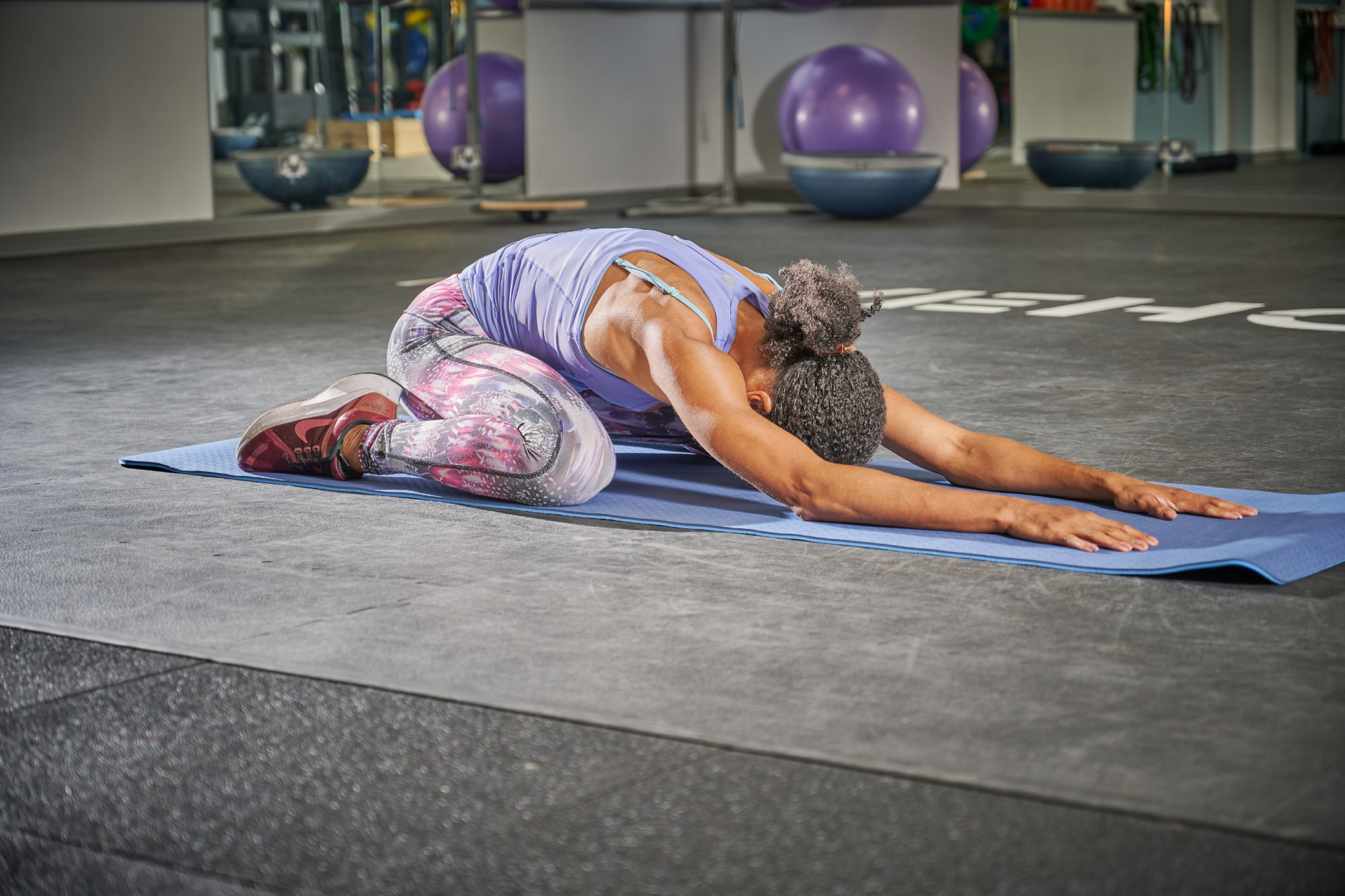
This gently flexed position is the perfect follow-up to Locust and Cobra. It allows the back to relax, and while reaching the arms above the head, stretches the shoulders and ‘lats’ or wing-like muscles that extend across the back.
- Start on all fours.
- Slowly sit back onto your heels and lower your forehead towards the floor. Take your knees wider if this makes the position more comfortable.
- Stretch your arms overhead, inching your fingers towards the top of the mat.
- Spread your fingers wide and press your palms into the mat.
- Hold for 30 seconds.
7. Locust pose
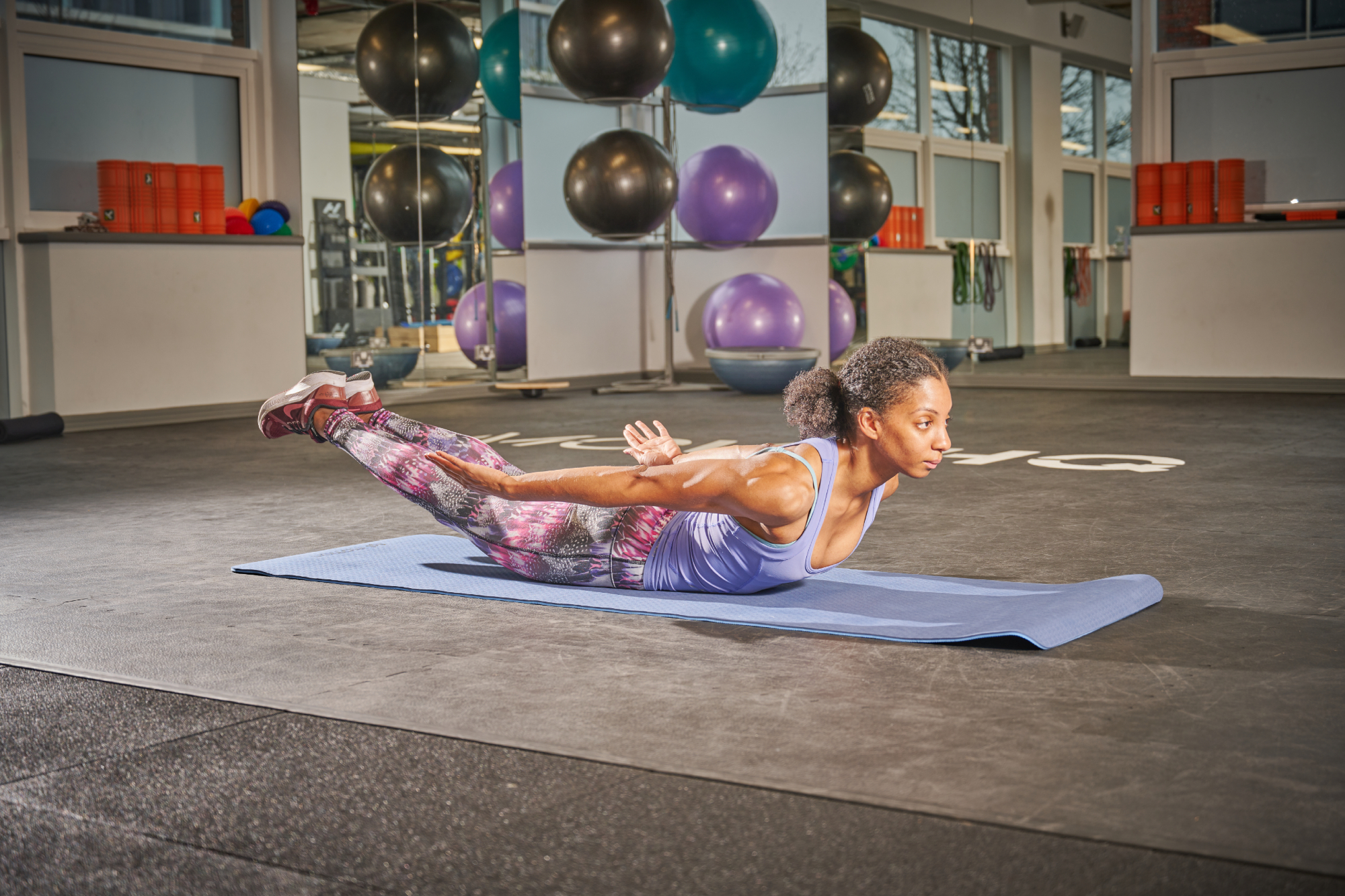
Locust is a gentle back bend but also strengthens the back extensors, helping to bolster the back on long rides. Think about squeezing the shoulder blades together to release tension in this upper back area.
- Lie on your front with your forehead on the mat and your arms by your sides.
- Raise your head, arms and legs on the floor but remain looking downwards or just to the top of the mat.
- Hold for 20 seconds.
8. Cobra pose
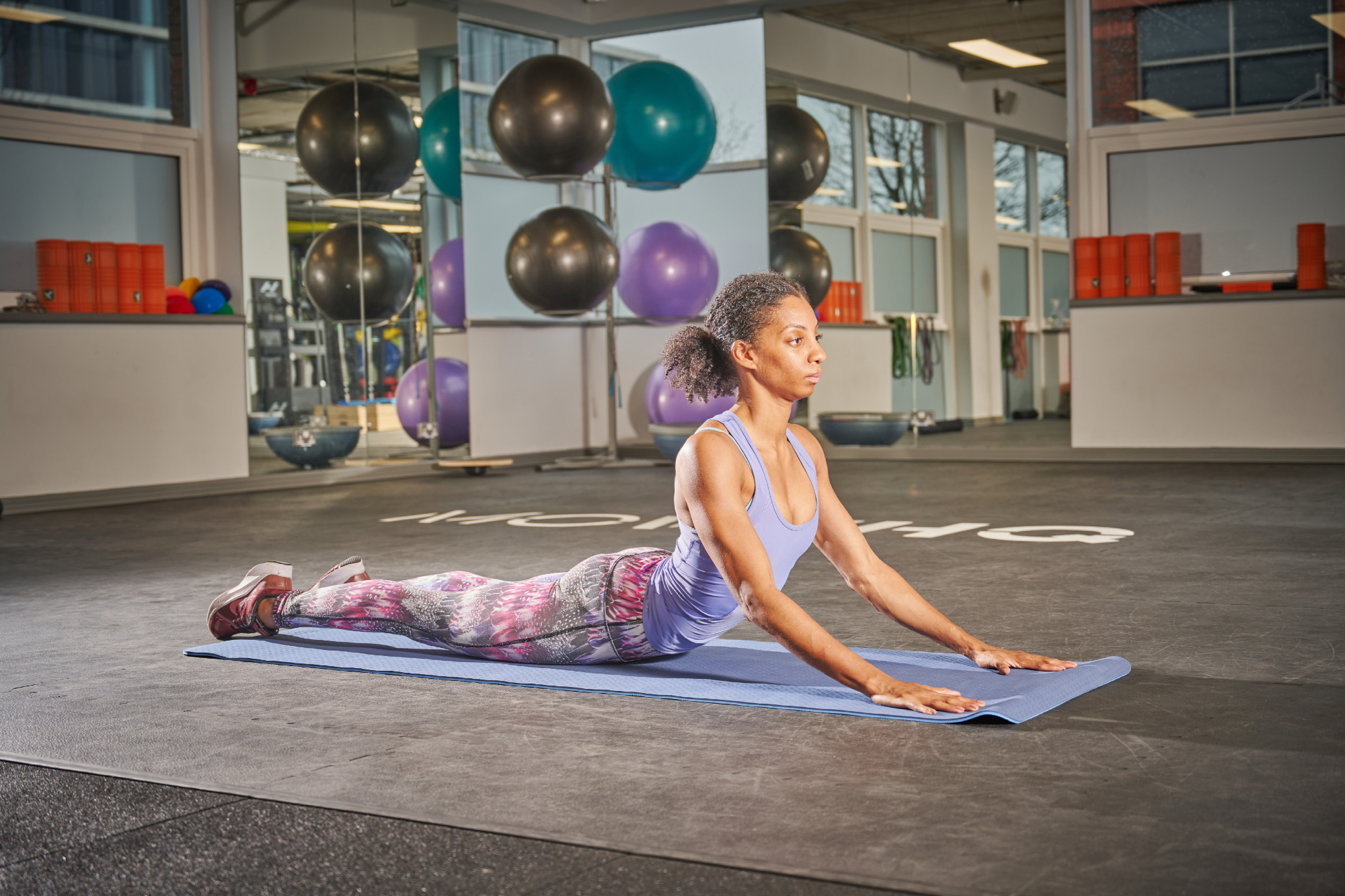
Cobra moves a rider’s back out of flexion and into extension and stretches the front of the torso. Cobra also strengthens the biceps and triceps. Don’t lift too high if you experience compression or discomfort in the lower back.
- Lie on your front with your forehead on the mat.
- Bend your arms and place your hands alongside your upper ribcage.
- Tuck your elbows into your sides.
- Press into your hands and slowly lift your upper body as high as is comfortable.
- Hold for 10 seconds then lower back down.
Three poses cyclists should avoid
OK, you don’t need to avoid these poses completely, but they should be approached with caution. Getting them wrong could heap more tension on areas where cyclists are already tense, such as the lower back, neck and shoulders.
Downward dog
Often prescribed in yoga classes and held for long periods of time, this pose can add tension onto already fatigued shoulders and feel like a plank if the hamstrings are too tight to shift your weight back on your shoulders and onto your heels. Puppy Dog is a great alternative for cyclists, as it moves the spine into gentle extension from the flexed riding position. From all fours, simply lower the forehead towards the floor and straighten the arms overhead.
Sitting cross-legged
If you haven’t sat cross-legged since primary school, and when you try, your knees hover on the ground, opt instead for sitting with the soles of the feet together. Interlace your hands around your feet and lean slightly forwards.
Seated ‘toe-touching’ poses
If tight hamstrings prevent you from comfortably reaching for your feet and doing so strains your lower back, lie on your back and loop a towel or dressing gown belt around your right foot. Straighten the leg up towards the ceiling, or keep it bent. This will remove the lower back from the equation and isolate the hamstrings. You can also push your heel up to target your calves.
The first version of this article was published in the print edition of Cycling Weekly. Subscribe online and get the magazine delivered direct to your door every week.





